Animal Reaction Protection
Want to learn how to increase your chances of survival when confronted by a wild animal? This post will give you the fundamental insights on how to react properly to your scary beast!

 Disclaimer: My name is Andrea and I am by no means on expert on how to handle wild animals. Nor have I ever been in such situations, thus I am not recounting from experience (expect a coyote, which involved squeaking in glee as it ran past into a forest). This post is meant to be an aid for a future emergency. If you plan on confronting a wild animal, DON’T. Or seek professional information.
Disclaimer: My name is Andrea and I am by no means on expert on how to handle wild animals. Nor have I ever been in such situations, thus I am not recounting from experience (expect a coyote, which involved squeaking in glee as it ran past into a forest). This post is meant to be an aid for a future emergency. If you plan on confronting a wild animal, DON’T. Or seek professional information.
My workshop on Wednesday, November 4th 2015 consisted of a slideshow presentation with information and an activity on Johnston Green.
If you were not present for the introductory presentation, here is a break-down:

Wolf
Wolves are usually extremely shy and will distance themselves from humans at the sight or sound of them. It is very unlikely you will ever be confronted by a healthy wolf.
However, IF you are confronted, do not run. Running may trigger a wolf’s hunting instinct. So:
- Do Not Run; First try to back away slowly while facing the wolf, and avoid eye-contact
- If it starts to come toward you, make yourself intimidating! You want to remind the wolf that you are scary to them, so wave your arms to appear larger and more intimidating.

Black Bear
Most bears will flee at the known presence of a human, even when startled or caught off guard! However, a habituated black bear (see right) is a black bear who has become used to human contact or even rewarded with food or garbage!
If confronted with a habituated black bear, you should do the following:
- slowly and quietly back away from the bear, and move to a safer location in possible
- give the bear lots of room to move away on their own
 If a black bear is scared of you, it will go into a defensive state. A defensive black bear will see you as a threat and is scared by your presence. It will lower its head and ears, possibly turning sideways in order to appear larger. It may huff or “pop” its teeth (a loud vocal popping sound) and even swat the ground with its front paws. A defensive black bear may also bluff charge, meaning it will pretend to charge at you, but will not actually continue. If confronted by a defensive black bear:
If a black bear is scared of you, it will go into a defensive state. A defensive black bear will see you as a threat and is scared by your presence. It will lower its head and ears, possibly turning sideways in order to appear larger. It may huff or “pop” its teeth (a loud vocal popping sound) and even swat the ground with its front paws. A defensive black bear may also bluff charge, meaning it will pretend to charge at you, but will not actually continue. If confronted by a defensive black bear:
- stick in a group while facing the bear in a location that ensures that the bear has a clear escape route – move slowly!
- DO NOT turn and run; this may trigger predatory behaviour. Use a low tone of voice so that the bear knows you are aware of its presence, and that you are not a threat.
NOW, what if you get an AGGRESSIVE PREDATORY BLACK BEAR?! A predatory black bear will NOT make any of the defensive actions described above. Instead, it will silently stalk, pressing closer to its prey. If this is the case:
- NEVER turn and run – this will instantly cause the bear to chase after you
- be aggressive; yell, make loud noises, throw rocks, wave your hands, swipe at the bear with sticks
Grizzly Bear

Grizzly bears are very different from black bears. You might encounter a curious grizzly bear.
Grizzly bears are very intelligent and often curious. They might find themselves exploring near you, because it does not perceive you as a threat. Thus, it is important to remain unthreatening.
When confronted with a curious grizzly bear, the best thing to do is absolutely nothing.
- literally just stand there and allow the bear to observe you
- do not show fear; you may alert the bear
- DO NOT try to move away from the bear; you may incline it to follow you

Your worst case scenario is being confronted by an aggressive grizzly bear. An aggressive grizzly bear will have its ears laid back and will chomp its jaws at you. If this is the case, DO NOT HOLD YOUR GROUND. Holding your ground as you would with a curious grizzly bear may threaten the aggressive grizzly bear and invite a charge. There are two options you can take if the bear decides to charge:
1) Back away while facing the the bear, but without making eye contact. Drop a non-food item between you are the bear; it may stop to investigate.
2) Play dead: drop to the ground belly down and clasp your hands behind your neck. Press your elbows against the ground, spread legs, and use toes in order to avoid being rolled over.

When playing dead, your best chance is to remain completely motionless. If the bear manages to roll you over, continues to roll until you are belly down again.
You must remain that way until the grizzly bear feels that its threat is removed, and leaves you.
TIPS: sometimes the bear just wants you out of the way; make sure you are out of a bears path. You can also use bear spray, but make sure that any wind does not carry it in your eyes. If a bear stands up on its hind paws, it is not showing aggressive behaviour; it is trying to get a better look at you.
Never try to outrun any bear: They are very fast, and will catch up to you.
Do not try to climb a tree to escape a bear: It will catch up to you before you even get high enough, all bears can climb to an extent and drag you down.

Moose
Watching moose from a distance can be fun! But if you are confronted by an agitated moose, it is not comfortable with your presence! Threatened moose may often leave to avoid the threat, but it may in turn threaten to charge you. An anxious or agitated moose will lay its ears back and the hair on the back of its neck and hips may stand up straight. They might also toss their head like a horse, show the whites of their eyes, or smack their lips. These are all warning signs that you are too close and it may charge. To act appropriately:
- KEEP YOUR DISTANCE: an aggressive moose wants to drive you off
- If it charges, RUN: if possible place obstacles such as trees between you and the moose as you run away. It will stop charging once it has driven you far enough away.
A moose may try to kick you with its front hooves; BUT DON’T STOP RUNNING. If you are on a trail and there is a moose ahead, wait until it moves away; do not try to scare it.
Cougar
 First thing’s first; do not wear cat nip if you do not want to be confronted by a cougar. Cougars are predatory animals, and if they see you as prey, that it bad news for you.
First thing’s first; do not wear cat nip if you do not want to be confronted by a cougar. Cougars are predatory animals, and if they see you as prey, that it bad news for you.
Here are some tips in order to lower your chances of being perceived as prey by a cougar:
- DO NOT RUN: This will instantly trigger pursuit
- make sure you stand and face the cougar, maintaining eye contact. Cougars prefer to ambush their prey from behind, so if it knows you’ve seen it, an attack is less likely
- If you are in a group, in order to join closer together, those in behind should move closer up towards people in the front: Never move backward
- If the cougar is intensely staring, stalking, or hiding, and is near by, make yourself look bigger; raise your arms, hold up a jacket or backpack over your head
- If the cougar still moves towards you, you must be intimidating; those things at it, shout and yell, use any sticks as weapons, and even smile to show your teeth (since a cougar’s weapon is their teeth). You want the cougar to think you are dangerous and NOT prey
- ALWAYS fight back (gulp)
The Workshop Activity
After going over all of this life-saving information, I had to make sure that it was engrained into everyone’s minds by having an activity on Johnston Green.

For everyone’s sake, I quickly reviewed what to do in confrontation with each circumstance: Wolf, Habituated Black Bear, Defensive Black Bear, Predatory Black Bear, Curious Grizzly Bear, Aggressive Grizzly Bear, Moose, and Cougar.

We especially had to practice our playing dead technique for confrontations with a charging aggressive grizzly bear:

Also had to go around to make sure that it was difficult to roll people over: Everyone passed.

I obviously had to act out some defensive actions that wild animals may show
(Ears laid back is a common one)


Everyone running away from an agitated moose:

Thank-you so much wild-lifers for your amazing participation!!

Many thanks to my photographers: Alaina Osborne and Nathan 🙂
For more on wild animal confrontation reactions, see:
“DON’T GET EATEN: The Dangers of Animals That Charge or Attack” by Dave Smith
Remember:
- Never approach, feed, or follow wild
- Conflict with wildlife are primarily caused by inappropriate human behaviour
- Lack of warning signs are NOT an invitation for you to approach a wild animal
- Always be safe and respectful in the wild!
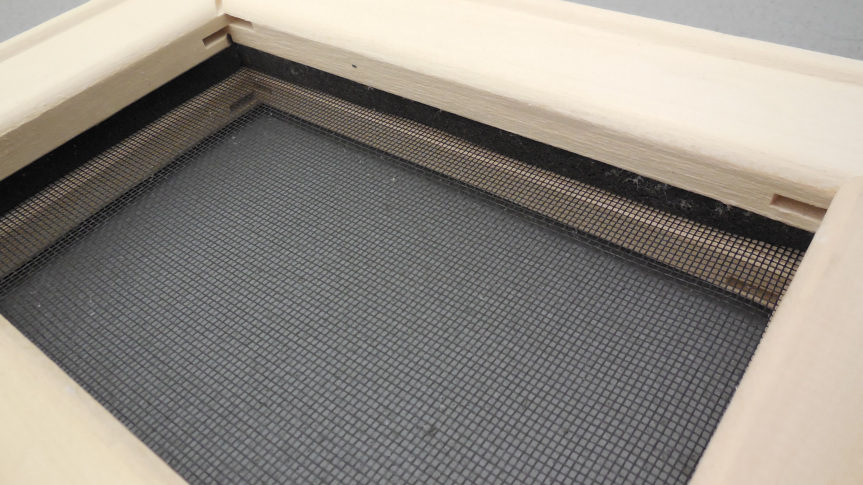

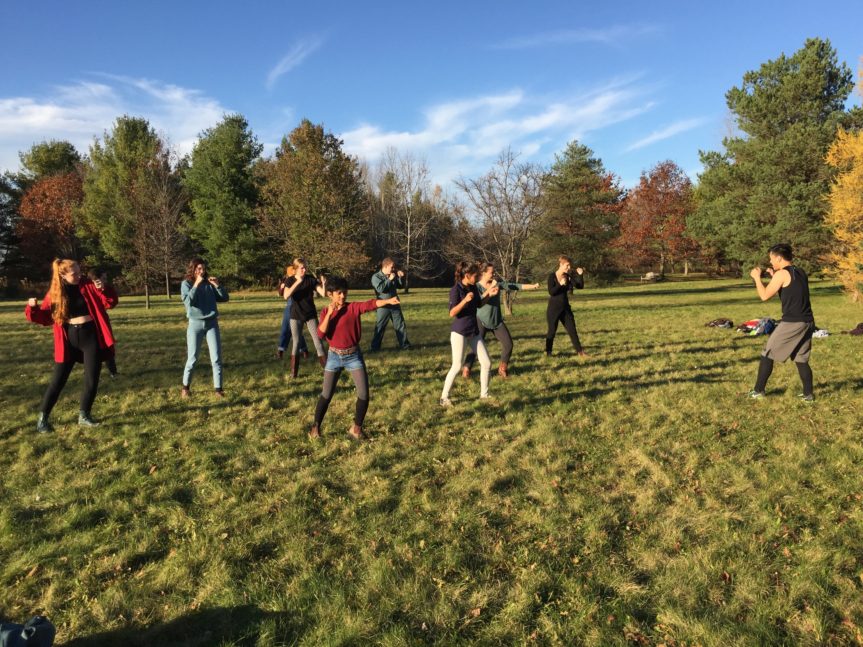








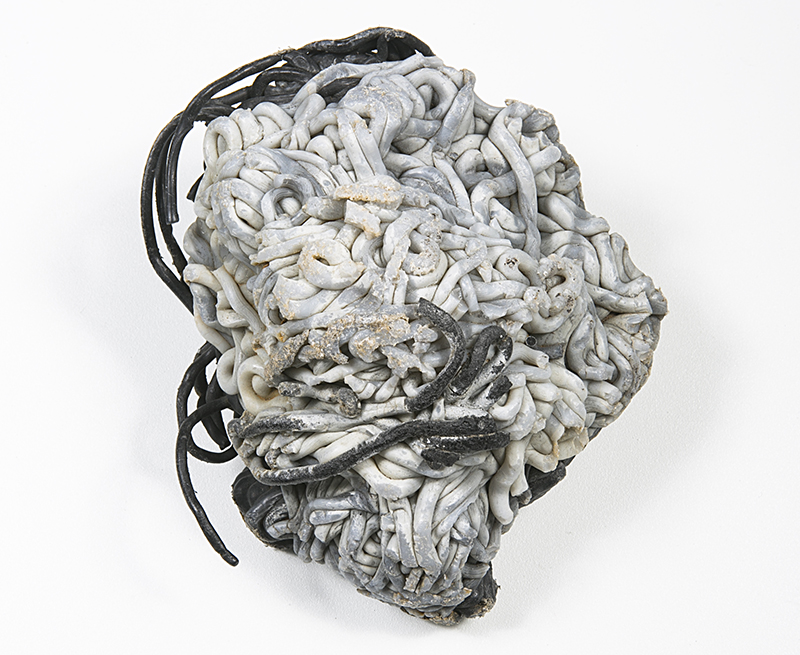








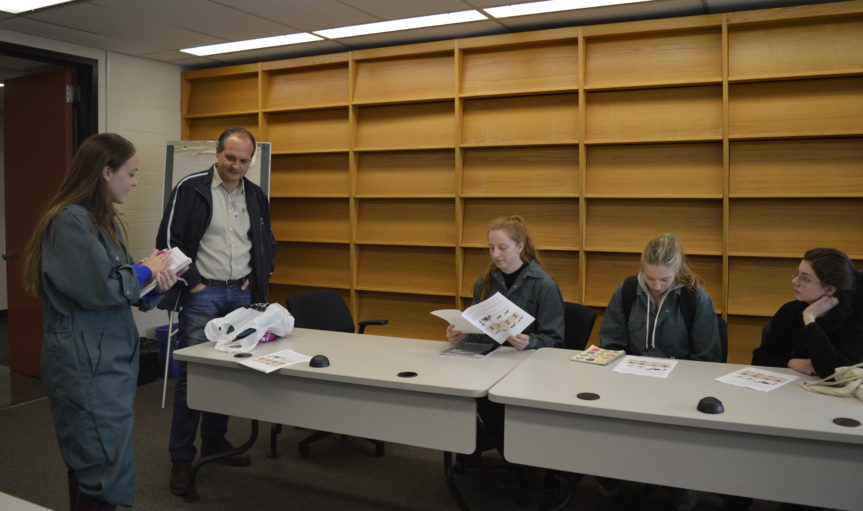








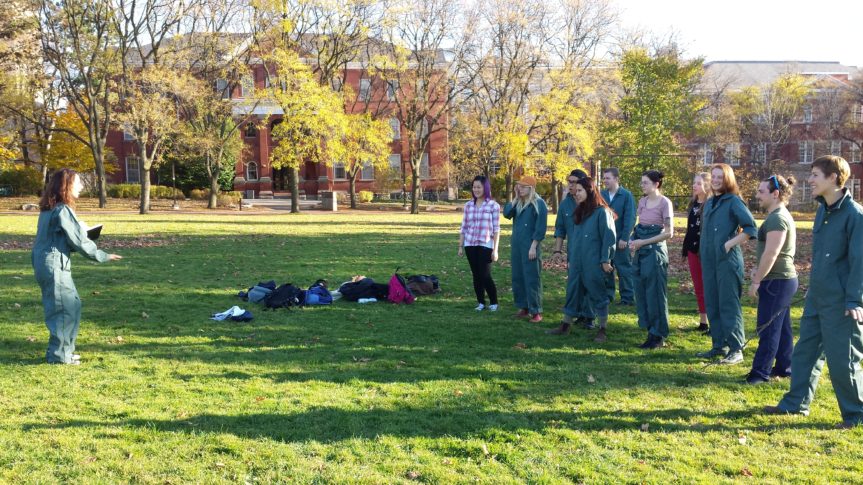


















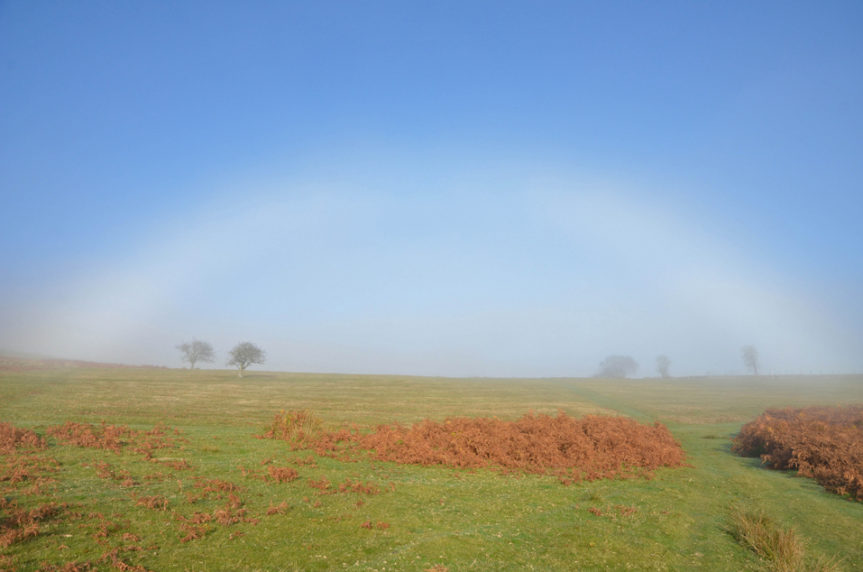

You must be logged in to post a comment.